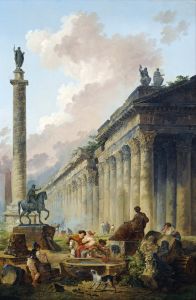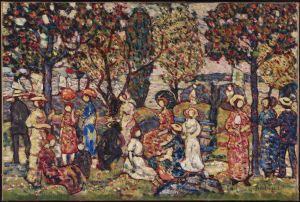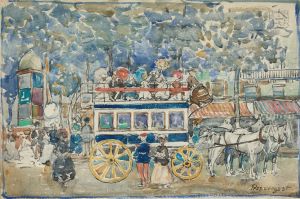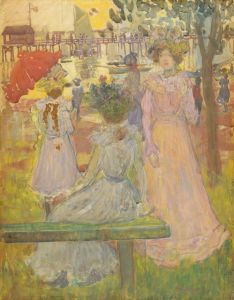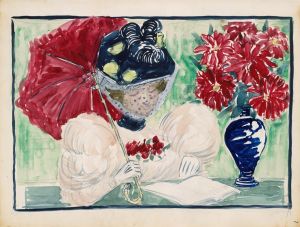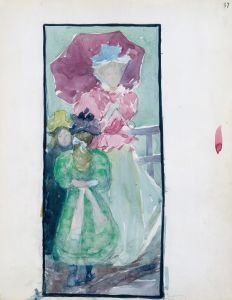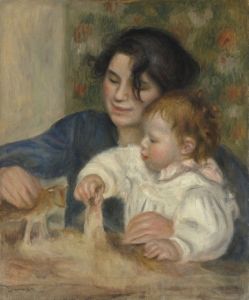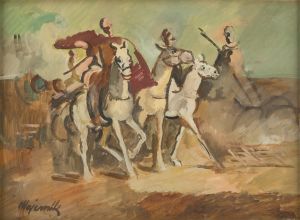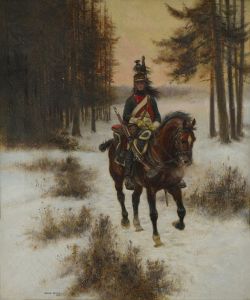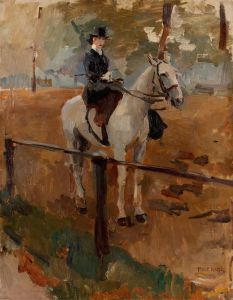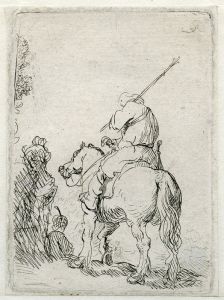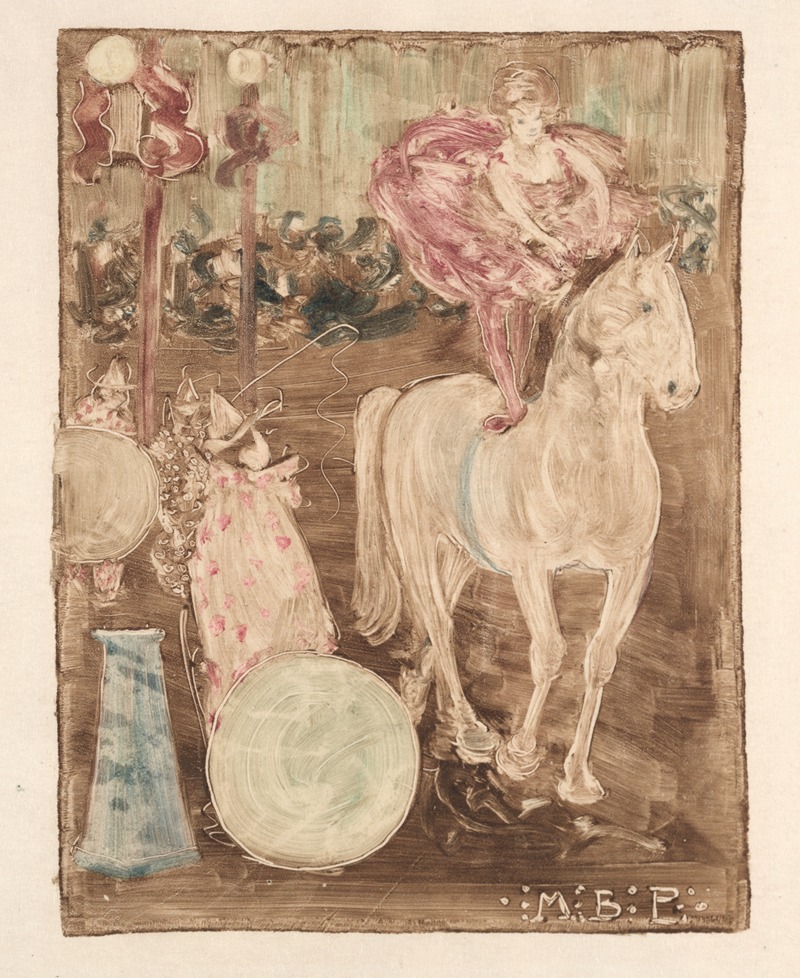
Bareback Rider
A hand-painted replica of Maurice Prendergast’s masterpiece Bareback Rider, meticulously crafted by professional artists to capture the true essence of the original. Each piece is created with museum-quality canvas and rare mineral pigments, carefully painted by experienced artists with delicate brushstrokes and rich, layered colors to perfectly recreate the texture of the original artwork. Unlike machine-printed reproductions, this hand-painted version brings the painting to life, infused with the artist’s emotions and skill in every stroke. Whether for personal collection or home decoration, it instantly elevates the artistic atmosphere of any space.
Maurice Prendergast was an American Post-Impressionist artist known for his vibrant use of color and unique style that often incorporated elements of both Impressionism and modernism. One of his notable works is "Bareback Rider," which exemplifies his distinctive approach to painting and his interest in capturing the dynamism of everyday life.
"Bareback Rider" is a watercolor painting, a medium Prendergast frequently employed due to its ability to convey luminosity and fluidity. The painting depicts a scene of a rider on horseback, showcasing Prendergast's fascination with movement and leisure activities. This work is characteristic of his style, which often included scenes of public entertainment and recreation, reflecting the social life of the late 19th and early 20th centuries.
Prendergast's technique in "Bareback Rider" involves the use of bold, flat areas of color and a rhythmic arrangement of forms. This approach creates a sense of harmony and movement, drawing the viewer's eye across the composition. The painting's vibrant palette and dynamic composition are indicative of Prendergast's ability to blend elements of Impressionism with his own modernist sensibilities. His work often eschewed the detailed realism of earlier art movements in favor of a more abstract and decorative approach.
The subject matter of "Bareback Rider" aligns with Prendergast's broader body of work, which frequently explored themes of leisure and the human figure in motion. His paintings often depicted scenes of parks, beaches, and other public spaces, capturing the essence of urban life and the burgeoning leisure culture of his time. This focus on everyday scenes was a hallmark of the Post-Impressionist movement, which sought to move beyond the limitations of Impressionism by incorporating more structure and form into compositions.
Prendergast was part of the group known as "The Eight," a collective of American artists who exhibited together in 1908. This group was instrumental in challenging the conservative art establishment of the time and promoting more modern approaches to art. Although Prendergast's style was distinct from some of his contemporaries, his work was influential in the development of American modernism.
"Bareback Rider" is a testament to Prendergast's innovative use of color and form, as well as his ability to capture the vibrancy of everyday life. His work remains significant in the context of American art history, as it reflects the transition from traditional to modernist approaches in the early 20th century. Prendergast's paintings continue to be celebrated for their decorative qualities and their ability to convey the joy and movement of the world around him.
Overall, "Bareback Rider" exemplifies Maurice Prendergast's contribution to the Post-Impressionist movement and his role in shaping the trajectory of modern art in America. His unique style and thematic focus have left a lasting impact on the art world, making his works an enduring subject of study and appreciation.






